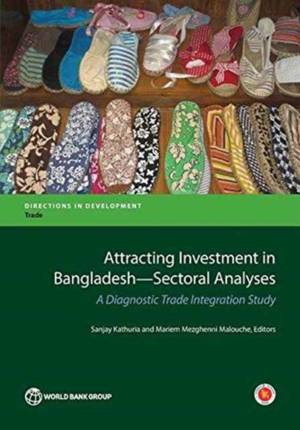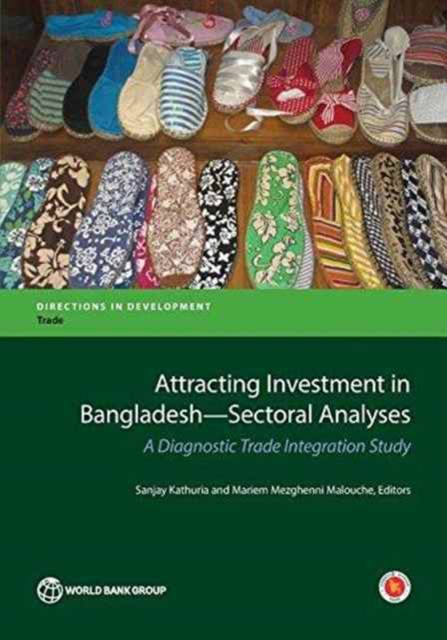
- Retrait gratuit dans votre magasin Club
- 7.000.000 titres dans notre catalogue
- Payer en toute sécurité
- Toujours un magasin près de chez vous
- Retrait gratuit dans votre magasin Club
- 7.000.0000 titres dans notre catalogue
- Payer en toute sécurité
- Toujours un magasin près de chez vous
Attracting Investment in Bangladesh Sectoral Analyses
A Diagnostic Trade Integration Study
World BankDescription
This is volume 3 of a three-volume publication on Bangladesh s trade prospects. Bangladesh s ambition is to build on its very solid growth and poverty reduction achievements, and accelerate growth to become a middle income country by 2021, and share prosperity more widely amongst its citizens. This includes one of its greatest development challenges: to provide gainful employment to the over 2 million people that will join the labor force each year over the next decade. Moreover, only 54.1 million of its 94 million working age people are employed. Bangladesh needs to use its labor endowment even more intensively to increase growth and, in turn, to absorb the incoming labor. The Diagnostic Trade Integration Study identifies the following actions centered around four pillars to sustain and accelerate export growth: (1) breaking into new markets through a) better trade logistics to reduce delivery lags; as world markets become more competitive and newer products demand shorter lead times, to generate new sources of competitiveness and thereby enable market diversification; and b) better exploitation of regional trading opportunities in nearby growing and dynamic markets, especially East and South Asia; (2) breaking into new products through a) more neutral and rational trade policy and taxation and bonded warehouse schemes; b) concerted efforts to spur domestic investment and attract foreign direct investment, to contribute to export promotion and diversification, including by easing the energy and land constraints; and c) strategic development and promotion of services trade; (3) improving worker and consumer welfare by a) improving skills and literacy; b) implementing labor and work safety guidelines; and c) making safety nets more effective in dealing with trade shocks; and (4) building a supportive environment, including a) sustaining sound macroeconomic fundamentals; and b) strengthening the institutional capacity for strategic policy making aimed at the objective of international competitiveness to help bring focus and coherence to the government s reform efforts. This third volume provides in-depth analysis of eight different manufacturing and services sectors of the Bangladeshi economy, which help to illustrate the thematic analysis of volume 2 and ground it in sector experiences. Besides pointing to cross-cutting themes, the analysis also highlights some specific issues and actions that could help relieve constraints to faster export growth in these sectors."
Spécifications
Parties prenantes
- Auteur(s) :
- Editeur:
Contenu
- Nombre de pages :
- 326
- Langue:
- Anglais
- Collection :
Caractéristiques
- EAN:
- 9781464809248
- Date de parution :
- 09-11-16
- Format:
- Livre broché
- Format numérique:
- Trade paperback (VS)
- Dimensions :
- 178 mm x 254 mm
- Poids :
- 571 g

Les avis
Nous publions uniquement les avis qui respectent les conditions requises. Consultez nos conditions pour les avis.






